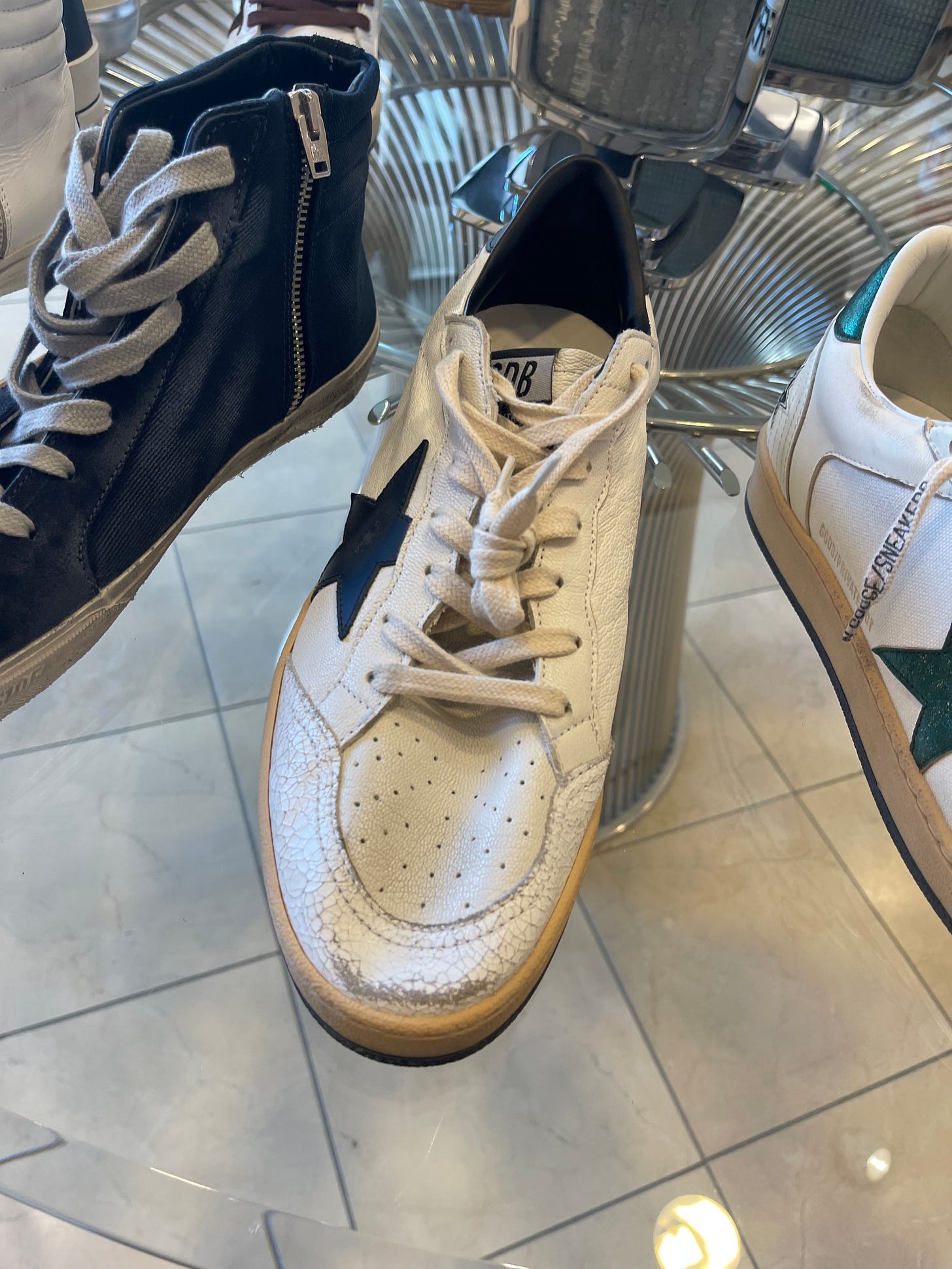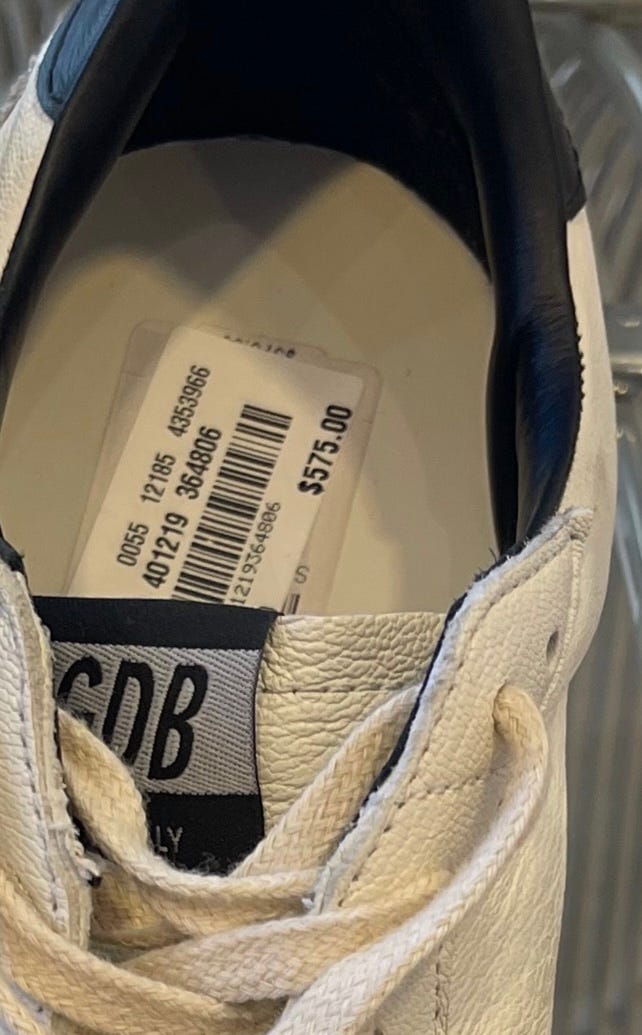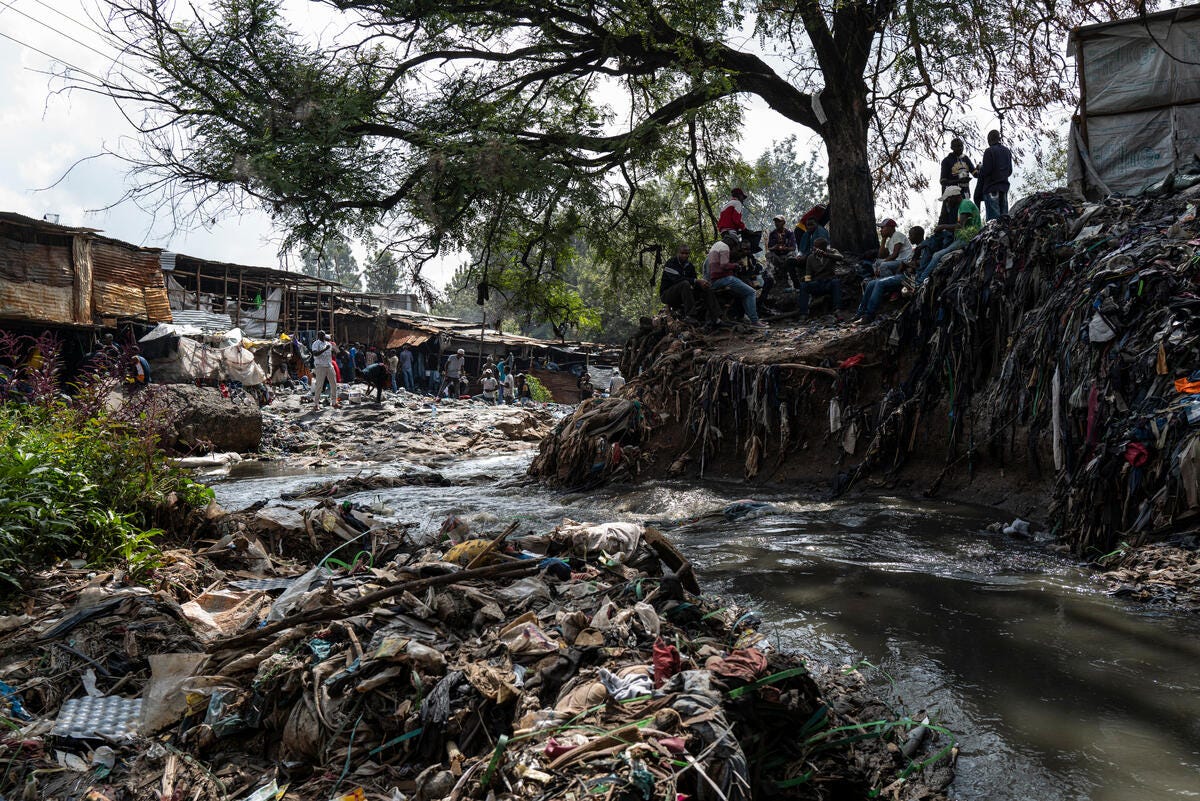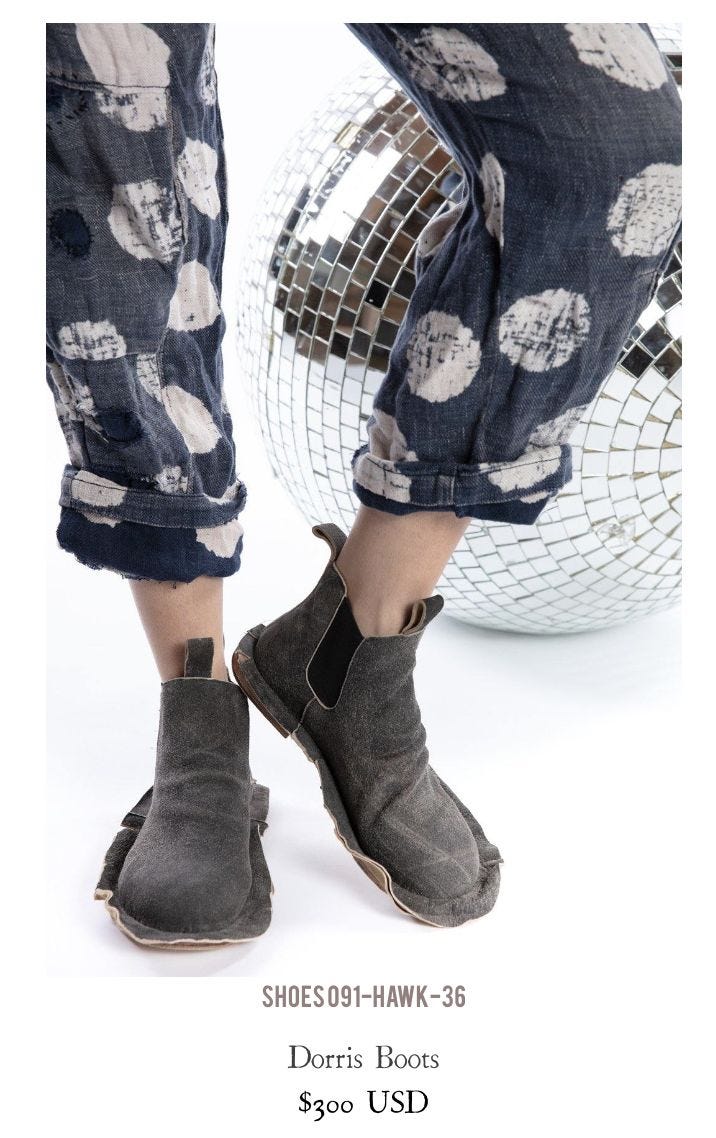From Runway to Landfill: The Environmental Impact of the "Poor Core" Aesthetic
Brands like Golden Goose promote 'homeless chic' clothing by intentionally creating low-quality products that contribute to environmental waste and end up in landfills.
If you were to guess, how much do you think these shoes are? $5? $20? $200?
My brother sent me this picture and asked me to guess. I assumed the price would be ridiculous because why else would he ask me?
I replied “$200”.
Then he sent me a picture of the actual price. $575 US DOLLARS.
My jaw dropped and I knew this topic would be my next newsletter.
The privilege of “poor core”
Wearing used clothes, repairing torn jeans, and even duct-tapping the holes in your shoes are not new concepts. Yet those who can afford to buy their way to this “aesthetic” with NEW clothes think it’s cute and quirky. What is the point of buying new “poor core”clothing items, such as these $530 Golden Goose duct-taped shoes, when there is already an overproduction of clothes/shoes that you can just DIY to match this aesthetic?
While companies like Golden Goose profit from a “used” look aesthetic, people in Chile and Kenya suffer from thousands of pounds of textile waste dumped in their backyards every year. The romanticization of poverty as a fashion aesthetic becomes incredibly problematic when we actually stop to think about those who do not have a choice to step out of “poor core”.
The Nairobi River which runs through Gikomba market is clogged up with textile waste. © Kevin McElvaney / Greenpeace
Clothing donation centers and shops are more likely to dump your clothes rather than resell them. With the increase in mass-produced low-quality clothing companies, such as Shein, these clothes are usually worthless once they reach these countries.
In 2019 Kenya imported 185,000 tonnes of second-hand clothes and with about 30 to 40 percent of Mitumba having no market value, this means that 55 500 – 74 000 tonnes was actually textile waste.
Two major things need to happen:
If new clothes are produced, they should actually be high quality and won’t deteriorate after 2 washes.
Slow down the production of clothes because we do not need to hyper-consume.
That being said, companies that purposefully produce poor-quality items for the high-end market are not only ridiculous but also contribute to social and environmental injustices. As they purposefully create rips and tears in their items, they bring them one step closer to a landfill.
These companies don’t just appear out of thin air though. They have a source of inspiration and a target audience.
In 2017, Kim Kardashian and Kanye West were criticized for their poor photo shoot aesthetic in a working-class home. We all know the “working class family” is not their reality but something they can fantasize about and even attempt to mimic. They have the privilege to go back to their multi-million dollar houses at the end of the day and not worry about paying their bills.
Just last month the clothing company, Magnolia Pearl had their viral moment on TikTok and Twitter when people called out their “hobo chic” clothing items with $100-$800 price tags.
This reminded me of the "the most fashionable homeless man in the world" photo shoot/ article. If you aren’t familiar, the photographer, Yurkov Dyachyshyn, published an article about a Ukrainian man named Slavik and his eccentric style. A lot of problems arose from that article alone.
Slavik would probably be stopped if he tried to walk into Neiman Marcus to purchase a pair of Golden Goose shoes but the same clothing items on a runway model would be applauded. The thin white women on Magnolia Pearl’s website are idealized yet if someone were to wear their clothes at 3 am around a park, the idealization might turn into pity. This aesthetic is only an aesthetic if one can buy their way into this “look”.
https://www.boredpanda.com/homeless-slavik-street-fashion-photography-yurko-dyachyshyn/
Poor Black, Indigenous, communities of color suffer from the overproduction of clothing and hyper-consumer culture in the United States and other predominantly white countries. These new “poor core” items only contribute to the problem as they produce more low-quality items that take over 100 years to decompose in order to keep up with the current trends.
So if you want the “poor” look, just buy actually used clothes and take a good look at your privileges to be able to step in and out of “poor core”.








